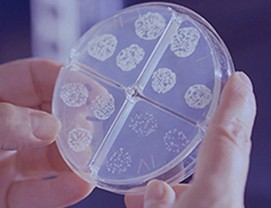Selecting Surrogate Species for Aerosol and Contact Testing
Sep 18, 2024
Introduction
In the complex field of research and development, surrogate species play an indispensable role, particularly in areas like environmental health, pharmaceutical development, and consumer product safety. These species are utilized to emulate the effects that various substances might have on humans or other target organisms within a controlled setting. This practice yields critical insights into potential impacts and ensures safety and adherence to ethical standards.
Image Suggestion: A diagram or collage illustrating various surrogate species and their corresponding target organisms in different research scenarios.
What Are Surrogate Species?
Surrogate species are non-target organisms researchers use in experimental settings to stand in for the species of interest. These organisms are chosen for their biological similarities to the target species, which allows scientists to extrapolate the effects of drugs, chemicals, or pathogens without the need to test directly on the target. A classic example in microbiological studies is the use of non-pathogenic strains of E. coli, which share crucial physiological and genetic traits with their pathogenic counterparts, making them excellent models for studying bacterial behavior and drug efficacy.
Virus Illustration
Criteria for Selecting Surrogate Species
The selection of an appropriate surrogate species is governed by multiple critical factors that ensure the validity and safety of the research:
Biological similarity: Surrogates must closely mimic the target species' genetic, physiological, and metabolic systems.
Safety and ethics: The chosen surrogates should pose minimal ethical concerns and safety risks to researchers and the environment.
Availability and handling: Ideal surrogate species are easy to maintain in laboratory settings, with manageable and cost-effective requirements.
Use of QMRA and QSAP Models in Surrogate Selection
Researchers employ sophisticated tools like Quantitative Microbial Risk Assessment (QMRA) and Quantitative Structure-Activity Prediction (QSAP) models to enhance the precision in selecting surrogate species. These models provide a robust framework for predicting how well a surrogate will mimic the target organism in specific scenarios, thereby refining the selection process with high-level, data-driven predictions.
Surrogate Table
Application in Aerosol Testing
Surrogate species are critical in aerosol testing, where they help assess the dynamics of airborne pathogens or pollutants. This form of testing requires surrogates that can accurately reflect how actual pathogens or chemicals behave when airborne, which is crucial for developing adequate air quality controls and treatments. For instance, bacteriophages or benign bacterial strains might be used to simulate the spread and deposition of more harmful microbes.
Application in Contact Testing
In contact testing, surrogate species evaluate how substances interact with biological surfaces, influencing product safety evaluations for items that contact human skin or other sensitive areas. This testing is indispensable for assessing the safety and effectiveness of cosmetics, sanitizers, and other topical agents.
Challenges and Considerations
Despite the advantages, using surrogate species is not without challenges. Variability among biological models and the influence of environmental factors can skew results, sometimes limiting the applicability of findings. However, ongoing genetic engineering and biotechnology advances continually enhance surrogate models' fidelity and predictive power.
Hazard Identification Graphic
Conclusion
The careful selection of surrogate species is fundamental to the efficacy of aerosol and contact testing methodologies. As scientific techniques evolve, so too does our ability to select surrogates that accurately predict human and environmental responses, driving forward safer and more effective product development.





